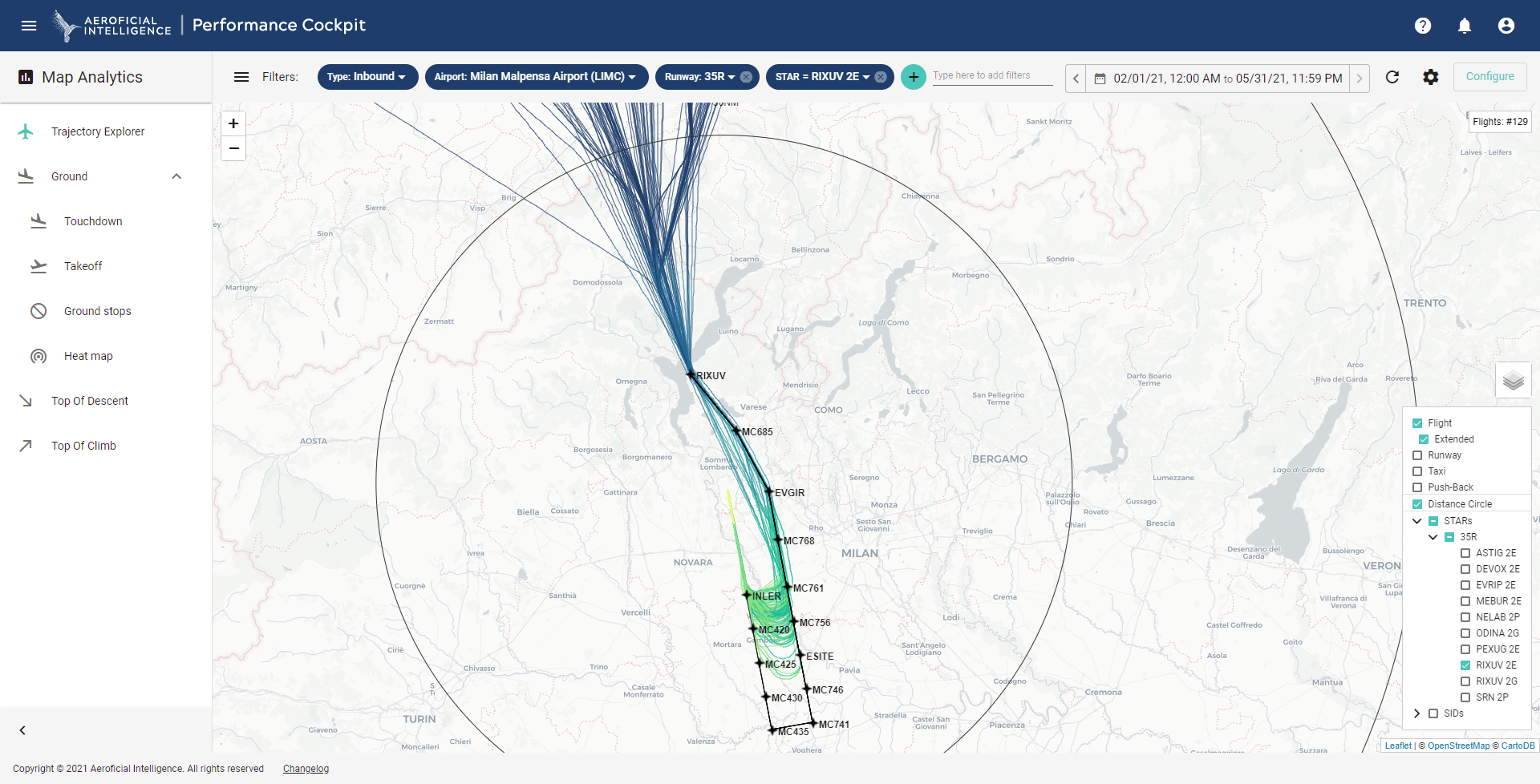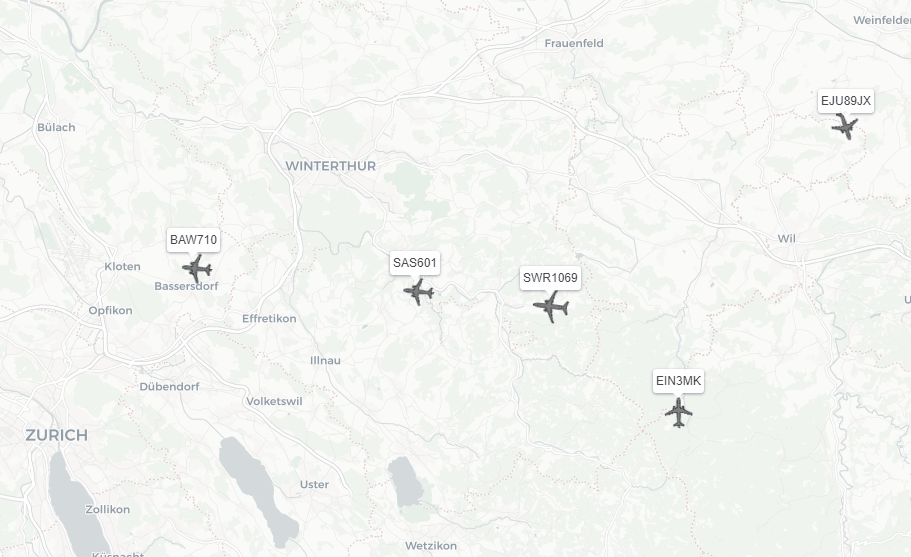Use Case Areas
Operational Procedures
Improve operational procedures through new insights while at the same time enhancing safety.
Airspace Performance — STAR/SID compliance
Optimize your airspace procedures to increase efficiency and safety!
Acoording to Eurocontrol, a Standard Instrument Departure Route (SID) is a standard ATS route identified in an instrument departure procedure by which aircraft should proceed from take-off phase to the en-route phase. A Standard Terminal Arrival Route (STAR) is a pre-planned instrument flight rule (IFR) air traffic control procedure. STARs provide transition from the en-route structure to an outer fix or an arrival way-point in the terminal area.
Aeroficial Intelligence is monitoring for each flight movement, whether the aircraft has taken a certain SID/STAR. This information is used to see how the current airspace structure and procedures are utilised and which routings are mostly used. Putting this information in combination with Continuous Climb or Descent Operation, emission savings can be derived.
Benefits
- Improve efficiency in airspace
- Optimise emission savings
- Traffic statistics, automated reporting
- Insights on current procedures
High Intensity Runway Operations (HIRO)
Expeditious exit from the landing runway allows air traffic control (ATC) to separate aircraft with an appropriate radar separation minimum during final approach. This is based on reduced airborne detours, delays, and reduced taxi times as runway throughput increases. Aeroficial Intelligence provides a full analytics solution to track the procedure, its compliance and provides information on how to optimize.
Benefits
- Procedure compliance tracking
- Increase in runway throughput and capacity
- Better utilising airport infrastructure
Wake Turbulence Re-categorisation (RECAT)
Increase capacity and improve safety during final approach!
Wake Turbulence Re-categorisation, or wake RECAT, is the safe decrease in separation standards between certain aircraft types. Aeroficial Intelligence is measuring separation in the approach phase based on distance and time. By including the Recategorized Wake Turbulence Categories (RECAT Wake Turbulence Categories A‑F) of the aircraft, valuable insights can be derived including different constellations such as a heavy aircraft followed by a medium aircraft. Aeroficial Intelligence sets limit values to detect violations in threshold values.
Benefits
- Increase in capacity
- Increase in safety
- Reports on RECAT violations
- Improvement of ATC performance


